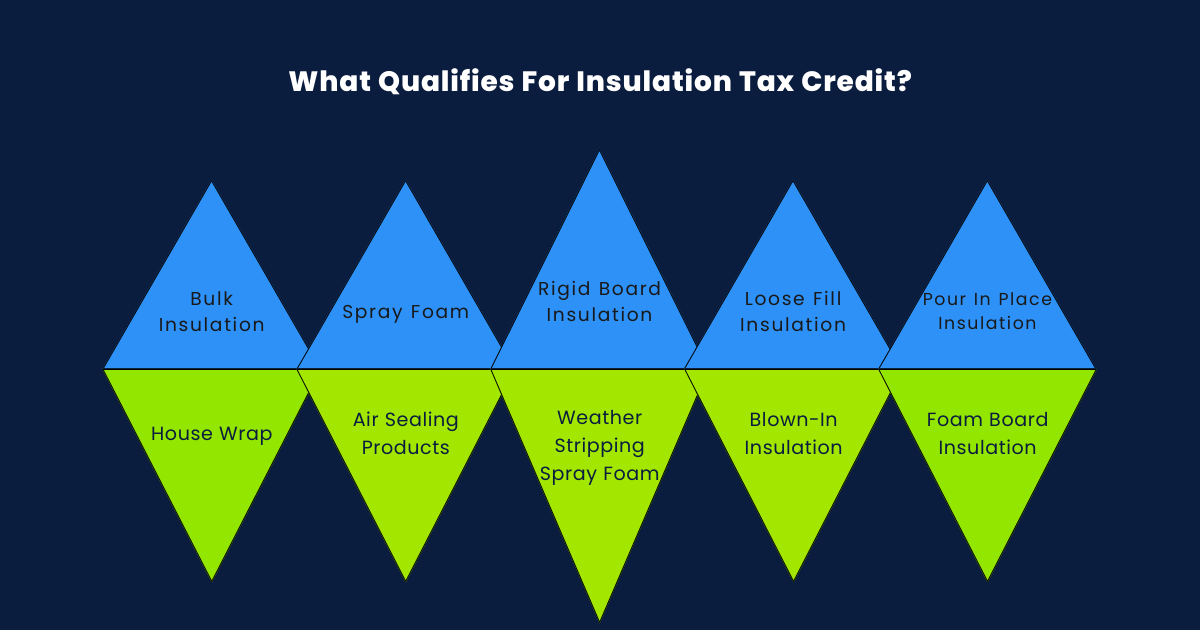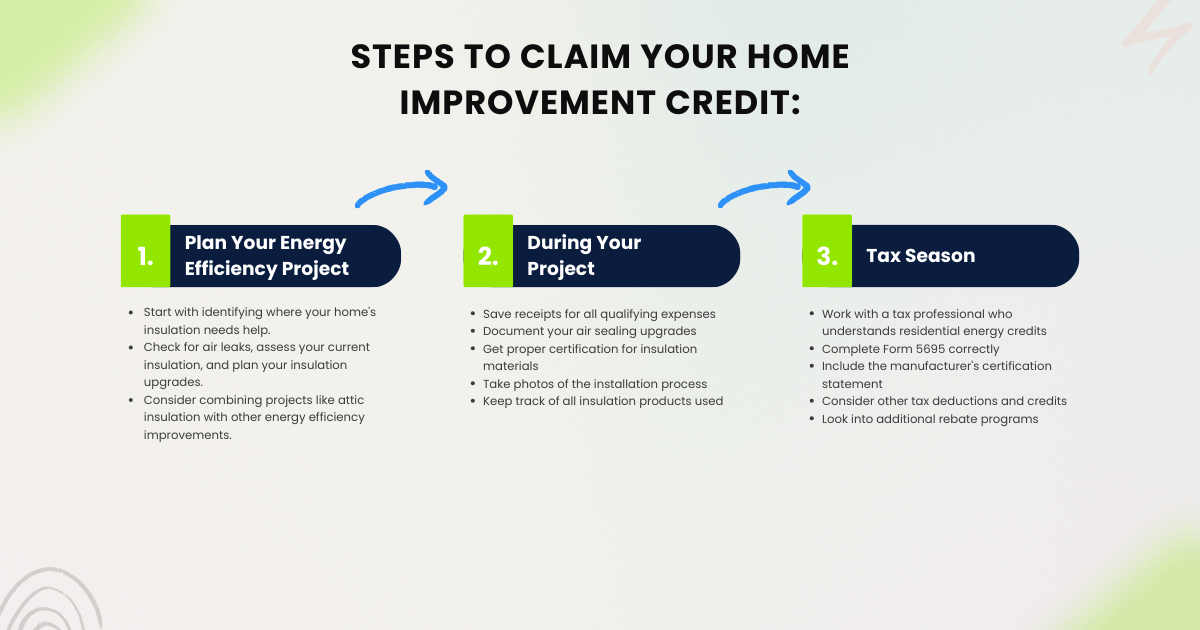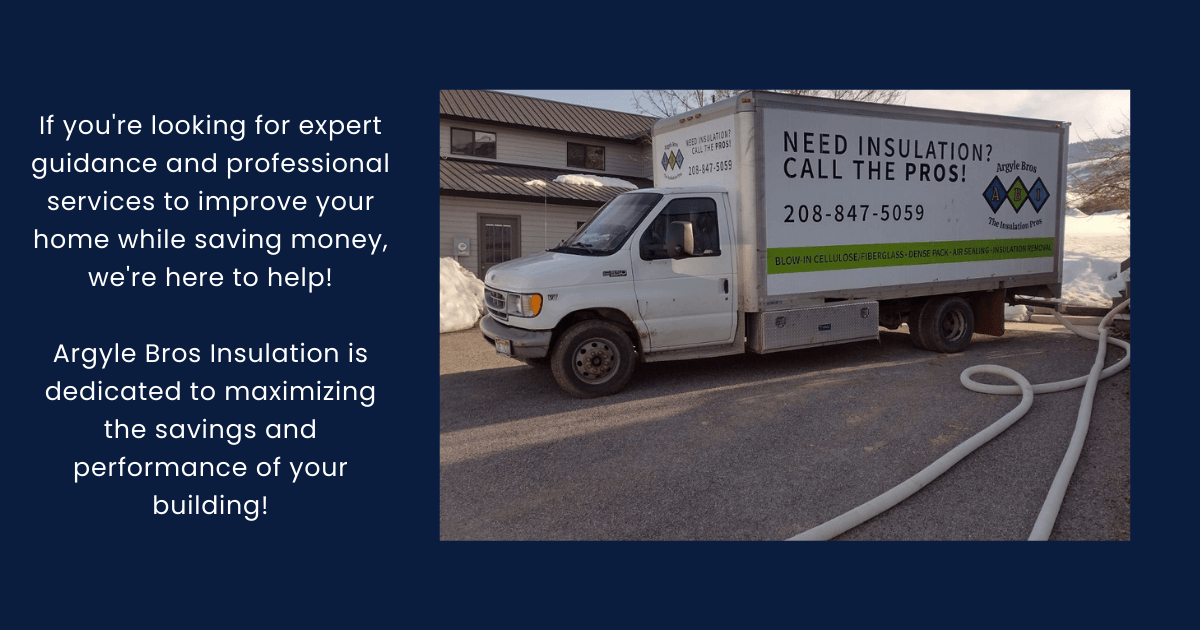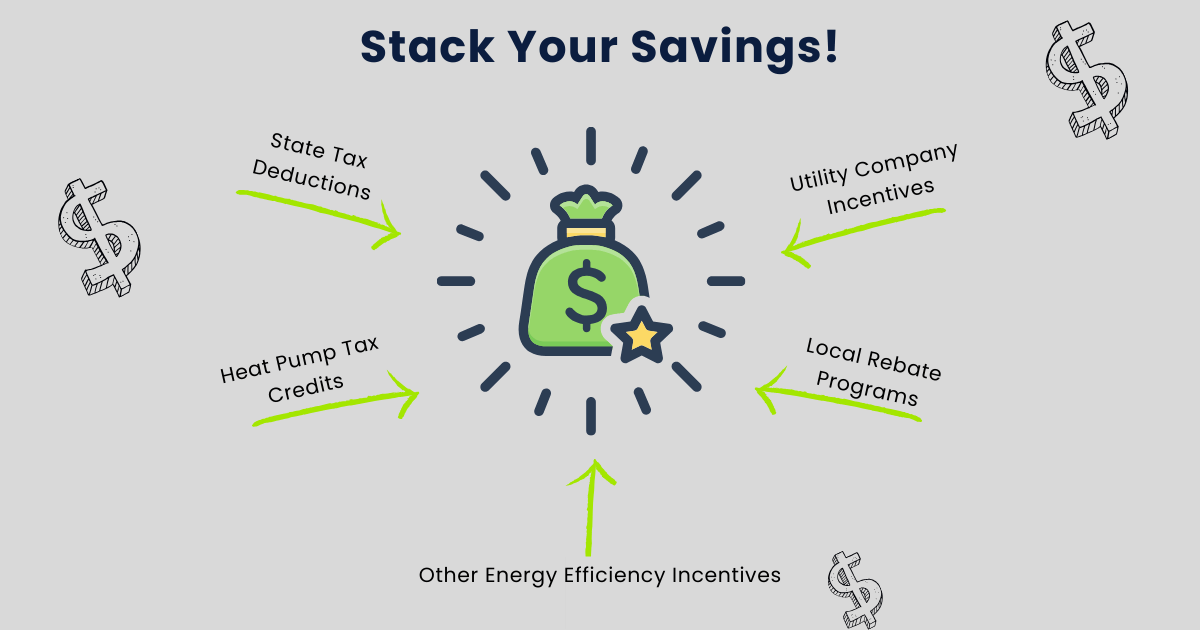2025 Insulation Tax Credit Explained: Your Step-by-Step Money-Saving Guide
Picture your money dancing right out your windows and walls – that's exactly what happens with poor home insulation! But here's the silver lining: Uncle Sam wants to help pay for your insulation upgrades through the federal tax credit. The energy efficient home improvement credit could put up to $1,200 back in your pocket while making your existing home as comfortable as can be. Let's explore how the insulation tax credit works and how you can claim tax credits for your energy efficiency projects.
Breaking Down the Energy Efficient Home Improvement Credit
Think of tax credits like a "buy one, get one free" deal at your favorite store – except this time, it's the government picking up part of the tab. Through the Inflation Reduction Act's energy efficient home improvement credit, you're getting a sweet deal that works differently from typical insulation rebates and tax deductions. This federal tax credit for installing insulation takes a bite out of your tax bill right away, making your home energy upgrades more affordable than ever.
How Does the Insulation Tax Credit Work in 2025?
The insulation tax credit and air sealing tax credit work together to maximize your savings. Through the energy efficient home improvement credit, you can claim 30% of your qualifying expenses for insulation materials and air sealing products, up to a maximum credit of $1,200 per year. This tax credit applies to typical bulk insulation products, spray foam insulation, and air sealing materials that improve your home's building envelope.
So how does this federal tax credit work? If you spend $4,000 on insulation upgrades and air sealing upgrades, you could qualify for a $1,200 tax credit. That's real money back in your pocket! Plus, you can combine this with current rebates and other incentives from your local utility companies to save even more.
What Qualifies for the Insulation Tax Credit?
To claim tax credits for your insulation project, your property must be your principal residence, an existing home (not new construction), and not used for business purposes. The good news is that most insulation qualifies for these financial incentives!
Qualifying insulation materials and air sealing materials include:
Typical bulk insulation products
Spray foam and weather stripping spray foam
Rigid boards and foam board
Loose fill and blow in fibers
Pour in place insulation
House wrap and air sealing products
Other insulation materials that meet energy efficiency standards
Each of these insulation products works as part of your home's building envelope, creating a complete thermal barrier. Installation costs and labor costs aren't covered by the tax credit, but don't worry – the savings on materials alone make this a fantastic deal for your insulation and air sealing project.
Important Details About the Energy Efficient Home Improvement Credit
Before you start your insulation and air sealing upgrades, let's talk about what the residential energy credits cover – and what they don't. The energy efficient home improvement credit has some specific rules that affect how you can claim tax credits.
Key points about this insulation tax credit:
No refunds if your credit exceeds your tax return amount
No lifetime limit – you can claim up to $1,200 each year
Covers materials only, not installation costs or labor costs
Works for your primary residence only, not rental properties
Can be combined with heat pump tax credits and other energy efficiency incentives
Requires proper documentation, including a manufacturer's certification statement
You can also explore additional rebate programs based on your area's median income. Many state and local programs offer insulation rebates and other incentives for energy efficiency projects like heat pumps and heat pump water heaters.
Documentation Needed for Insulation Tax Credit Claims
Just like keeping the recipe for your grandma's famous cookies, proper documentation for your insulation tax credit is worth its weight in gold. For successful tax credit claims, you'll need:
Detailed receipts for all insulation materials and air sealing materials:
A manufacturer's certification statement for qualifying products
Energy efficiency standards documentation
Photos of your insulation project before and after
Completed Form 5695 for residential energy credits
Proof that your existing home's insulation meets the requirements
Documentation for any additional rebate programs you're using
Having a tax professional review these documents can help ensure you get every penny of your insulation tax and other energy efficiency incentives. They can also help you understand how the tax credit works with other home energy upgrades like heat pumps and HVAC systems.
Steps to Claim Your Energy Efficient Home Improvement Credit
Want to know how the insulation tax credit works? From installing insulation to claiming your tax credits, the process is smooth. Whether you're planning insulation upgrades, air sealing upgrades, or a complete building envelope overhaul, understanding how to claim tax credits for your home energy upgrades can make a big difference in your wallet. Plus, with current rebates and other incentives available for everything from typical bulk insulation products to heat pump water heaters, you'll want to make sure you're getting every penny you deserve. Here's your step-by-step roadmap to maximizing those insulation tax benefits:
Planning Your Energy Efficiency Project
Start with identifying where your home's insulation needs help.
Check for air leaks, assess your current insulation, and plan your insulation upgrades.
Consider combining projects like attic insulation with other energy efficiency improvements.
During Your Insulation and Air Sealing Project
Save receipts for all qualifying expenses
Document your air sealing upgrades
Get proper certification for insulation materials
Take photos of the installation process
Keep track of all insulation products used
Tax Season Strategy
Work with a tax professional who understands residential energy credits
Complete Form 5695 correctly
Include the manufacturer's certification statement
Consider other tax deductions and credits
Look into additional rebate programs
Remember, electrification projects and other home energy upgrades might qualify for additional financial incentives beyond your insulation tax credit.
Real Numbers: Insulation Tax Credit Example
Meet Sarah from Idaho Falls, who invested in comprehensive insulation and air sealing upgrades. Here's how her energy efficiency project played out:
Her qualifying expenses included:
Attic insulation and air sealing: $2,500
Weather stripping and expanding spray foam: $1,500
Wall insulation with rigid boards: $3,000
Her total savings through various incentives:
Energy efficient home improvement credit: $1,200
Local utility rebates for insulation upgrades: $400
Annual savings on HVAC systems operation: $500
Additional rebates for electrification projects: $300
Total first-year savings: $2,400 (More than enough for a year's worth of Idaho potatoes!)
Common Mistakes When Claiming Insulation Tax Credits
When it comes to claiming your energy efficient home improvement credit, even small oversights can cause big headaches. Here are the top pitfalls to avoid:
Documentation Slip-Ups
Missing manufacturer's certification statements for your insulation materials
Incomplete receipts for air sealing products
Forgetting to document energy efficiency standards
Not keeping before and after photos of your insulation project
Timing Troubles
Missing deadlines for current rebates
Filing Form 5695 incorrectly
Not coordinating with other home energy upgrades
Mixing up tax years for qualifying expenses
Material Mix-Ups
Using insulation products that don't meet efficiency standards
Forgetting to check if your insulation qualifies
Missing opportunities to combine insulation and air sealing upgrades
Not getting proper certification for specialty materials
Why Professional Installation Makes a Difference
While the insulation tax credit doesn't cover labor costs, professional installation of your insulation materials and air sealing products is worth every penny. Here's why:
Proper installation ensures your insulation upgrades meet energy efficiency standards
Professionals can identify hidden air leaks and recommend the right insulation products
Expert installation maximizes the performance of your building envelope
Proper documentation helps you claim tax credits and access rebate programs
Professionals understand how insulation works with your HVAC systems
Expert teams can coordinate insulation and air sealing upgrades with other energy efficiency projects
Ready to Save with Insulation Tax Credits?
At Argyle Bros Insulation, we're your partners in navigating tax credits, rebate programs, and energy efficiency standards. We understand how the insulation tax credit works and can help you maximize your savings with:
Professional guidance on qualifying insulation materials
Expert installation that meets energy efficiency standards
Complete documentation for your tax credit claims
Help identifying additional rebate programs
Support for all your home energy upgrades
Don't let another day go by watching your money float away through air leaks and poor insulation. Call (208) 847-5059 or contact us online today to learn more about current rebates and available tax credits for your insulation project!
Frequently Asked Questions About Insulation Tax Credits
Does R-19 insulation qualify for tax credits?
You bet! As long as your insulation materials meet basic energy efficiency standards, they qualify for the tax credit. This includes typical bulk insulation products like R-19 and other common insulation products.
Can I combine insulation rebates with other incentives?
Absolutely! Stack your savings with:
Local rebate programs
State tax deductions
Utility company incentives
Heat pump tax credits
Other energy efficiency incentives
How often can I claim the insulation tax credit?
There's no lifetime limit on these residential energy credits. You can claim up to $1,200 in tax credits each year for qualifying insulation and air sealing materials.
Do installation costs count toward the tax credit?
While labor costs and installation costs aren't covered, the credit applies to all qualifying insulation materials and air sealing products used in your existing home.









